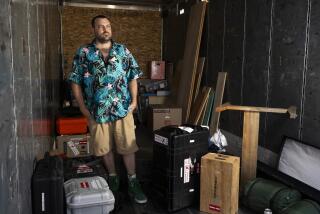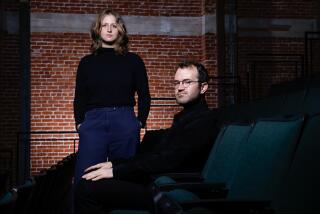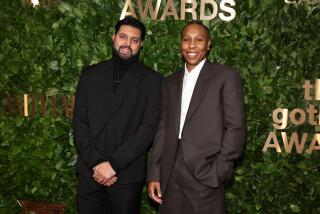Testing the waters in Tinseltown
Job description: “My job primarily is to set up and conduct screenings to test the playability and, to a lesser degree, the marketability of films with moviegoers. It’s really to help the film be the best film it can be.
“Each project is unique. A client can be a marketing department at a studio or the producer directly or the filmmaker directly. The majority of the screenings that get commercially released are through the studios.”
Involvement: “A film will begin the research screening process really in the early stages. It is a first work print or a rough draft. The music can be temporary, sound and color [can be temporary]. There is no advertising material. It depends on the studio or filmmaker but [we could begin screenings] six or eight months in advance of the film [opening]. Occasionally, we’ll test close to release.”
Clients: “We can’t mention clients or names of films. There’s a great sensitivity around research.”
Recruitment: “We do work with the studios or the filmmakers to determine the kind of needs for each particular film. You generally like to, in the first research screening, cast as wide a net as possible. You never know who is going to respond to the film and then it may synthesize in the second or the third research screening.
“The majority of the recruiting [for audiences] is still done in the field. Most of the screenings are being conducted in theater chains so they will utilize the home theater or other movie theaters within the driving distance and the area [for audiences]. If the demographic of the film is kids or teens, maybe they will go to the malls or video gaming stores.
“The standard house size is about 300 when they test the film, so they will have enough of a sample to break out into what they call ‘quadrants.’
“A lot of the films that get released [are tested] in and around the L.A. area due to executives and creative teams being able to attend.”
Thumbs up or down: “Everyone who attends the screening gets a double-sided questionnaire and fills that out. There are kind of benchmarks -- there is a ratings question, a recommendation question. But each questionnaire is tailored [to the film].
“After people fill out the questionnaire, there is about a 20-minute focus group that occurs. There are moderators who talk to the audience. A lot of the questions are similar to what is on the questionnaire, but it’s also an opportunity to probe in great detail questions the filmmakers have or the studio executives have. The focus group is about 20 people. It is kind of a microcosm of what the demographic was for the entire screening.”
Problem solving: “We have had films break while the screening is occurring. We have had prints not show up. We had in New York, once, a problem with the screen -- there was a rip in the actual screen, the theater chain had not made us aware. We had to move an entire audience from the East Side of Manhattan to the West Side of Manhattan in an hour. We started calling cabs, got some buses together.”
Background: “Each person who ends up here has a different story. For me, I actually trained as an actor. Kevin Goetz, who is the president of the motion picture group here, has been a great mentor -- we had the same acting teacher .... I came from a more theater background, but I had a real interest in film. I began working on the production side [of films] and then quickly made the transition into this. It’s been a great ride.”
Union or guild: None
Resides: Mar Vista
Age: 27
*
-- Susan King
More to Read
The biggest entertainment stories
Get our big stories about Hollywood, film, television, music, arts, culture and more right in your inbox as soon as they publish.
You may occasionally receive promotional content from the Los Angeles Times.











